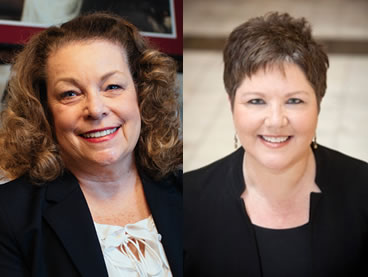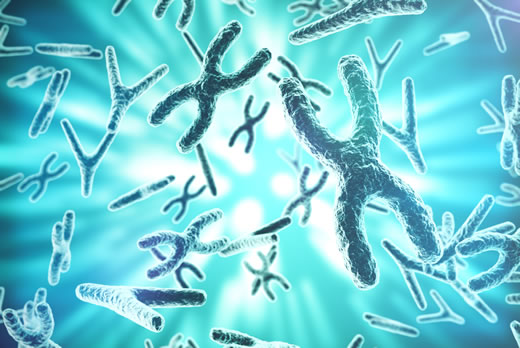One day a month, the recently opened "eXtraordinarY" clinic sees two to three young patients in Emory Clinic B. While its patient base is small, its reputation is growing as a resource for families affected by sex chromosome variations.
Established by pediatric nurse practitioner Sharron Close and developmental pediatrician Amy Talboy in 2016, the clinic is the first in the Southeast and one of a few nationwide that provide information, treatment, and access to research for these conditions.
X and Y variations are not inherited and occur when girls (XX) and boys (XY) are randomly born with more or less than the expected number of sex chromosomes. Some people with variations such as trisomy X (which occurs in one out of 1,000 female births) and Klinefelter syndrome (which occurs in one out of 500 males births) live free of or are mildly affected by symptoms, while others face lifelong medical, developmental, and behavioral challenges.
Girls with trisomy X, for example, may be unusually tall and have weak muscle tone and widely spaced eyes. Boys with Klinefelter syndrome may have tall stature, weak muscle tone, testosterone deficiency, and unhealthy metabolic profiles that predispose them to conditions such as central obesity, diabetes, hyperlipidemia, and cardiovascular disease.
Both groups may experience issues with reproductive health and learning and social disabilities that impact psychosocial health and quality of life. While X and Y variations are not rare, they are rarely diagnosed, leaving children, adults, and families to struggle on their own without knowing why.
"Families have been falling through the cracks for decades," says Close, a faculty member in the nursing school. "Our clinic meets a tremendous need."
Close and Talboy currently see patients who have been diagnosed via chromosomal analysis. The clinic evaluates their needs and connects children and parents with early intervention programs, speech and language therapies, and occupational and physical therapies as needed.
As children grow older, clinicians can address reproductive health problems that may arise during puberty. They can also counsel expectant parents about possible risk of X and Y variations detected through prenatal screening.
A genetic counselor, nurse navigator, neuropsychologist, pediatric endocrinologist, and adult urologist staff the clinic, in addition to Close and Talboy. The clinic now has a wait list, and its co-directors are debating whether to add a second clinic day.

Sharron Close, Amy Talboy
"We are growing a step at a time," says Talboy, a faculty member in human genetics. "We want to be available to anyone who would like to see us. We will follow every child over time to make sure their needs are addressed, their therapy is adequate, and that they are progressing as hoped. We can also educate families about research opportunities available to them."
Until recently, most X and Y research was descriptive in nature and offered few interventions to help patients and families. To close the gap, Close organized conferences in 2015 and 2016 to engage patients, families, clinicians, and scientists in developing ways to help children and parents manage X and Y symptoms and cope with the issues they face in their lives. The No. 1 goal of patients and families in attendance, she found, was to raise awareness and promote education about sex chromosome variations.
For the past two years, Georgia Governor Nathan Deal has signed a proclamation declaring May as X & Y Chromosome Variation Awareness Month, marking a milestone in a grassroots campaign led by Close, Talboy, and Dorothy Boothe, whose son has XXY (Klinefelter) syndrome.
Boothe is a member and parent leader of the Southeastern Regional X and Y Support Group, which draws patients and families from Georgia, North Carolina, South Carolina, Alabama, Tennessee, and Florida. The group meets bimonthly, often at the School of Nursing.
"The first time we met, we had five or six times more people that we expected," says Talboy, who has addressed the Georgia State Senate about X and Y variations.
Close is also a collaborator on a documentary by filmmaker Dianne Steinkraus, whose younger sister Carole has trisomy X. For years, Dianne consulted with doctors and behavioral experts to learn the cause of her sister's mental health issues. When Carole was 53, genetic testing confirmed she had trisomy X. Finally, the sisters had an explanation for Carole's lifelong struggles with anxiety, insecurity, and difficulty connecting with family and friends. It also explained why she was 6 feet tall by age 12.
Carole, now 60 and in assisted living in Minnesota, is the inspiration behind Dianne's film. When completed, it will feature experts and projects from around the country, including a regional network of eXtraordinarY clinics like the one at Emory.
"There probably are many other women like Carole who still haven't been diagnosed," says Close.

